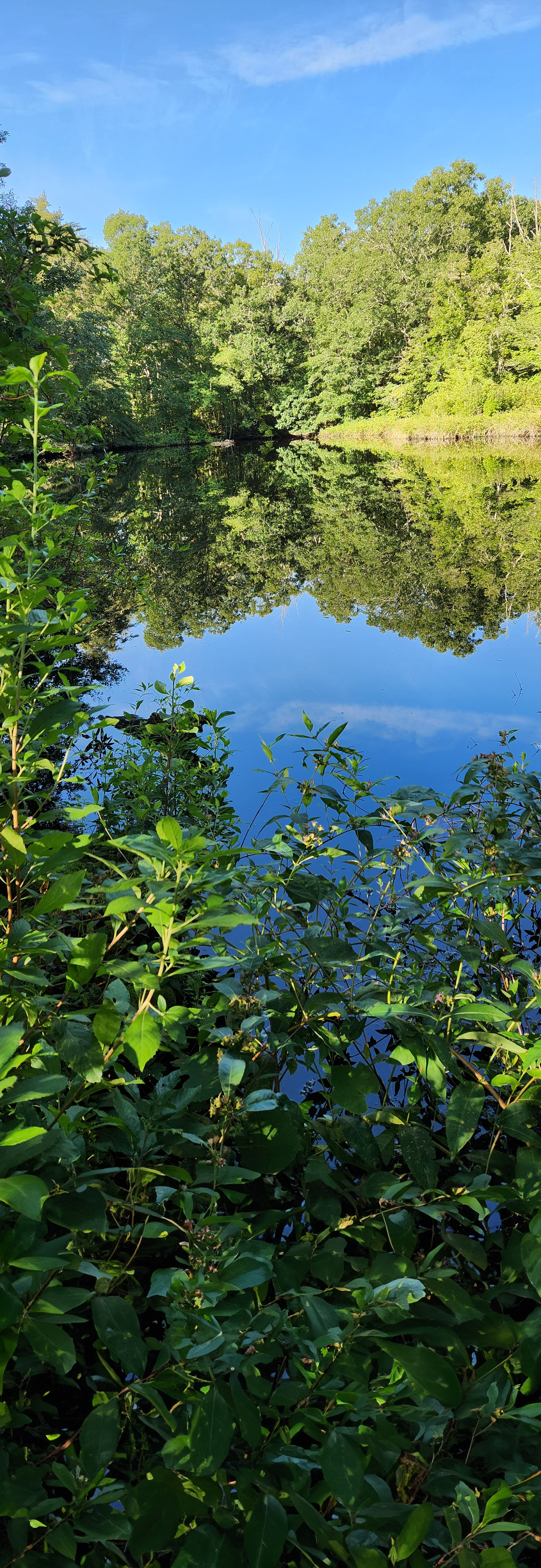
3 minute read
AUDUBON ACQUIRES SOUTH KINGSTOWN WILDLIFE REFUGE
ELEANOR & MAURICE H. GORDON WILDLIFE REFUGE
November 1, 2024
By Camryn Sandbach
Our parents ingrained in us that all the land’s interconnected beings have value and rights. One of the most effective ways to fulfill that is through the preservation of our open and natural spaces. We couldn't think of a better organization than Audubon Society of Rhode Island and their mission of conservation to help us achieve that goal. – The Gordon Family
For over 80 years, members of the Gordon family maintained 67 acres of land in South Kingstown that had provided a haven for wildlife. Recently, the family made the decision to donate the land to Audubon for conservation, acting on the lessons that a previous generation had instilled in them: that nature holds intrinsic value.
The new Eleanor & Maurice H. Gordon Wildlife Refuge is mostly comprised of wetlands, critical habitats that add to the biodiversity that will remain protected under Audubon’s care. The property also consists of forests which provide a home for yearround species such as Barred and Great-Horned Owls; fresh-water streams and a pond that support fish, frogs, turtles, and native aquatic plants; and thick brush on the forest floor, where mammals such as white-tailed deer and coyotes reside.
The refuge holds particular value due to its location near the Great Swamp Management Area. “Larger tracts of land are critical to conservation efforts, and adding to large, already protected parcels achieves many goals,” explains Audubon Senior Director of Conservation Scott Ruhren. “Large, wooded areas are more resilient to stress, such as climate change, while smaller woodlands are more exposed to wind, heat and cooling. They are also more vulnerable to invasive species.” In addition, many forest birds and animals need larger spaces to thrive.
Circling Back To Its Roots
Although the new property will largely remain off-limits for public use due to the sensitive habitat found within its borders, it is possible that a small section of the land may once again become a nursery for native plants. A portion of the property was originally used by the Gordon family to grow shade and flowering trees. The business, Spring Green Nurseries, est. 1955, wholesaled large trees to landscape contractors throughout Southern New England. Circling back to this original use, Audubon may cultivate valuable native plant species on this property in the future. Seeds and plants could then be transplanted onto other Audubon properties and shared with local conservation organizations to support native pollinators, birds and other wildlife.
According to Audubon Executive Director Jeff Hall, land donors are vital contributors to the Audubon mission. “The Gordon family worked hard to maintain this property and keep its natural features. This acquisition offers an opportunity for Audubon to continue our protection of the land in their name, and support the wide range of wildlife species that call it home. We thank the Gordon family for this extremely generous donation, and for trusting us to care for it in perpetuity.”
____Camryn Sandbach is an English major studying at Rhode Island College. Outside of writing for Audubon, interests include reading, creative writing, knitting, and spending time walking through nature.––––
DID YOU KNOW?
For over 100 years Audubon has been a trusted partner to landowners, tailoring permanent conservation plans for families. If you are considering land donation, contact Senior Director of Conservation Scott Ruhren to discuss ways you can work with Audubon. Email sruhren@asri.org or call 401-949-5454 ext. 3004.










